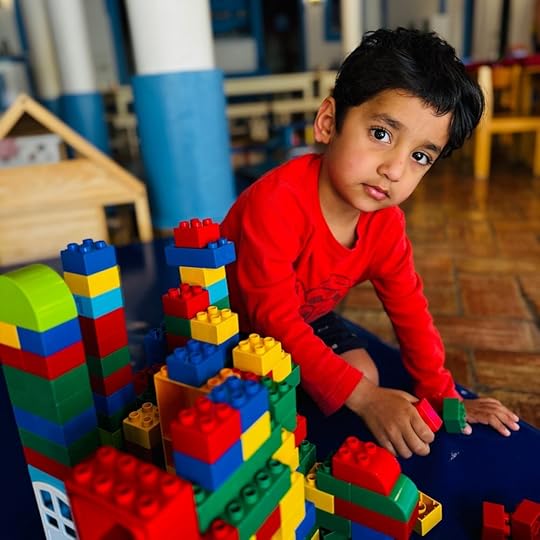Kunal Gupta's Blog, page 6
November 17, 2024
How to Cycle
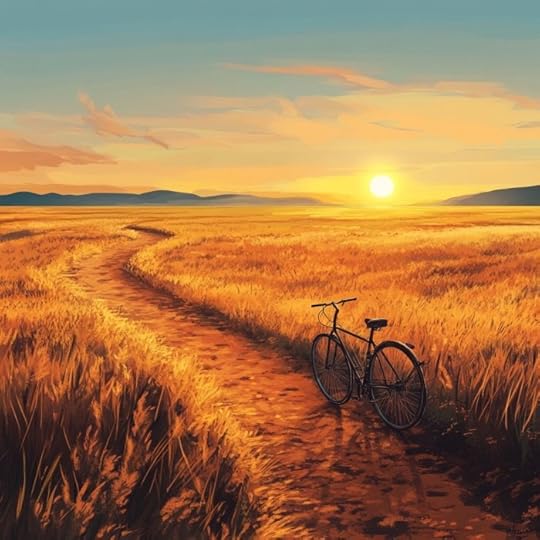
I can still picture my first bike.
It was red, with black handles and training wheels that made a distinct clatter against the pavement. I was six, and the idea of riding without those training wheels felt as impossible as flying.
My dad was crouched beside me, steadying the seat. His hand felt solid, reassuring, like an anchor I wasn’t ready to lose. When he finally let go, I remember the magic of those first few seconds. The wind tickled my face; the world seemed to blur. But then I fell, and everything came crashing back to earth—literally. My knees scraped against the gravel, stinging with fresh cuts, and I burst into tears. It wasn’t just the fall that hurt. It was the heartbreak of how quickly the magic disappeared.
Still, I got back on the bike. Not because I was brave, but because my dad encouraged me to be curious. What if the next ride lasted longer? What if I could feel that way again? The questions were enough to overcome the fear of falling.
There’s a rhythm to cycling, a flow that mirrors life itself.
Pedal, coast, pedal, coast. Every push forward is deliberate, fueled by effort and determination. And then there’s the coasting, those fleeting moments when everything feels effortless, as though the world is carrying me forward. That’s how hope works. It’s fragile, fleeting, and sometimes illogical, but it’s the spark that keeps me moving forward, even after a setback.
Hope is the fuel for life’s journey.
Sometimes it’s the dream of something better, something brighter, something new. Other times, it’s the hope of avoiding something worse. But hope isn’t tied to reality—it’s tied to possibility. And because of that, it’s powerful. It’s also vulnerable.
The most fragile hopes, the ones closest to my heart, often stay unspoken. I hold them quietly, protectively, because saying them out loud feels scary. I might lose them.
I’ve learned the hard way that hope often turns into attachment. There was a project I was leading years ago, one that my team and I poured months of effort into. I wasn’t just working on it—I was building a story in my mind about how it would turn out. I could see the recognition we’d receive, the pride we’d feel, the validation I was chasing.
That story became so real to me, so vivid, that it felt like a certainty. But when reality unfolded, it didn’t match the story I had crafted in my mind. The disappointment was overwhelming. It wasn’t just the failure of the project—it was the collapse of the story I had clung to so tightly.
That’s the thing about attachment. It’s not physical; it’s emotional. It’s the tethering of my identity, my worth, to an outcome that only exists in my mind. And when reality doesn’t align with that outcome—as it so often doesn’t—the disappointment can feel crushing. Reality, in its quiet, indifferent way, just is. It doesn’t apologize for being what it is, and it doesn’t try to align with the fantasies I create.
But disappointment isn’t the end of the cycle. Sitting with it is painful, but also illuminating. I’ve found that when I take the time to reflect on my disappointment, I can begin to see what was at its core. What was I really hoping for? Recognition? Security? A sense of accomplishment? When I understand the “why” behind my disappointment, it starts to lose its grip. And once it loosens, hope begins to creep back in. Slowly, quietly, I find myself pedaling forward again.
Curiosity has been my greatest ally in breaking the cycle of hope, attachment, and disappointment. It reminds me that life is rarely about a single outcome. Instead of anchoring myself to one possibility, I try to stay open to the range of what might unfold. I think back to that first bike ride—falling wasn’t the end. It was part of the process. And each time I got back on, I discovered something new, even if it wasn’t what I wanted.
Reality will always have the final say, and it rarely matches the stories I tell myself. But that doesn’t make the journey any less valuable. Life isn’t about the destination. It’s about the rhythm, the movement, the small victories of simply continuing. Even when I fall, even when the magic doesn’t last, I can get back on the bike of life. And maybe that’s enough.
And that’s how I learned to cycle.
November 10, 2024
How to Miracle
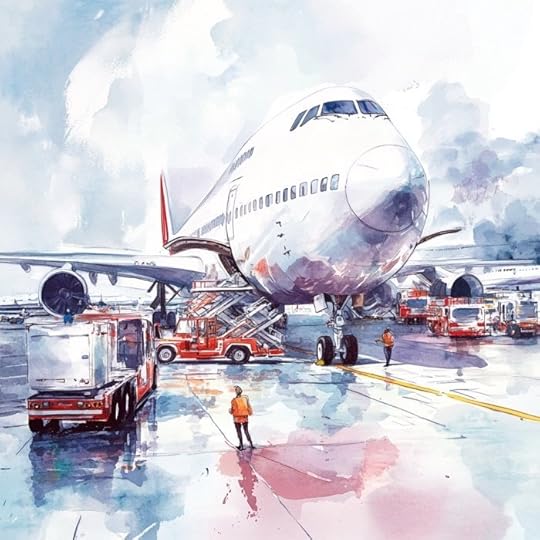
My four year old nephew adores planes.
He loves to talk about taking a plane. He loves asking about when he’s going on a plane next. He loves to ask if visitors came on a plane. He proudly announces to his parents often that his uncle, me, is probably sitting on a plane right now.
It’s not just him that loves plans. I do too.
While waiting to board a recent flight, I found myself staring out the window at the gate. The sun was shining brightly off the jumbo jet, that had a majestic presence despite resting on what looked like such delicate feet.
I began to notice the airport ground crew, some in a rush, some not so much. There were people loading cargo bags, others driving trucks with what looked like food containers, and even more people that it wasn’t clear to me what they were doing.
I glanced and saw the airline agents checking people in, one by one. My fellow passengers, all different ages, ethnicities, and stages of life. For just a moment, I imagined all of the different places they have all come from, and are all going to after we land.
Then it hit me. The coordination required to make happen what I was about to experience was unreal.
The pilots. The flight crew. The ground crew. The food. The cleaners. The airport control tower. The airline. The airport security. Border control. And so many other. Within a mere few hours, so many people had to be involved for this moment to happen.
And it’s not just my sole experience of taking one flight. There are thousands of such flights, each with hundreds of people, across tens of thousands of airports, all being coordinated simultaneously with no one person or entity in charge. Every single day.
This is not even accounting for the engineering that has gone into figuring out how to lift a piece of metal, with hundreds of humans, into the sky and safely move it across an ocean to a different part of the world. And then put it back onto the ground.
It felt like a miracle.
It is a miracle when I take just a moment to think about it. The opportunity for something, anything, to go off plan is tremendous and yet, nine times out of ten, ninety percent of everything goes to plan.
And when that one time out of ten something inconvenient happens, we more than often lose our patience or peace, with little aknowledgement for what did go to plan.
Now apply this to so many other experiences in our day-to-day lives.
Taking a train or bus to work. How many people were involved in the engineering, the building of the stations, the management, cleanliness and safety of the entire process? And when the train takes an extra two minutes than anticipated to arrive, we feel a bout of disapproval and disappointment.
Or take buying groceries at the supermarket. How annoyed do we get because the avocados for sale are not ripe enough, the tomatoes not soft enough, or the lineup to pay too long? Forgetting the fact that produce has been grown and transported over months from hundreds of locations around the world to give us the variety, selection and convenience we desire within ten minutes of our home.
We are experiencing miracles day in and day out. And it completely changes my experience of them when I take just a moment to recognize reality for what it is.
Yes, there are disappointments that naturally arise. It’s part of the human experience. But there can also be appreciation and gratitude for what we get to experience as humans.
It is absolutely incredible. It fills my heart with gratitude and my mind with awe.
Miracles need not be the rare, once-in-a-lifetime moments or acts reserved for a divine life force. The best miracles are the ones I experience every single day, when I truly open my eyes and see. I suspect that’s something my nephew knows how to do naturally and why he loves planes so much.
And that is how I learned to Miracle.
November 3, 2024
How to Diwali

“When my candle is used to help light yours, mine doesn’t get any less dim but rather there is now more brightness in our world”.
Light is a symbol of celebration, and Diwali for me has become a celebration that I look forward to and cherish the most each year. Which begs the question, what am I celebrating exactly?
I grew up celebrating the Indian new year with family and friends, steeped in cultural traditions, often intertwined with colorful religious ceremonies that have become rituals I look forward to each year.
As I grew older and grew out of my childhood home, and then relocated to New York and then Lisbon, it has been telling to reflect on which childhood traditions I would retain and which ones I would shed.
The annual festival of lights has for me become a celebration of what is versus what is not.
Oftentimes in religious traditions, from any faith, the focus can easily become on asking for something we don’t have. This is the norm that I grew up with and so did those around me. Be it birthdays, calendar new year, Christmas, or Diwali, amongst siblings, cousins and friends, we’d excitedly gossip about what we asked for.
Maybe six or seven years ago, as I began to feel more connected with my own spirituality, I started to notice a rejection of this idea of using celebratory moments to ask for something.
I began to flip the script in my heart, and now use these moments to share appreciation instead. Everytime I bring my palms into a prayer in front of my heart, I find someone or something to appreciate within my heart.
Celebration is not much fun when experienced alone, and is much more joyful, energizing and meaningful when shared with others. The sharing of appreciation and gratitude with others is one of the highest forms of connection I have experienced. Connection to myself, connection with others and connection to a greater life force.
When I take even a moment to reflect on what I appreciate, the list is endless. Hearing what others appreciate spurs me to discover even more that I appreciate. It’s an infinite loop of continuous appreciation!
Now when I wish family and friends a Happy Diwali, what I am really saying is I appreciate you. And when I receive greetings from others, I hear I appreciate you. All of this warms my heart.
The candles, sparklers, fireworks and every imaginable form of light is simply a symbol of that appreciation. The spread of lightness helps put any darkness we feel or fear into perspective. It is not about eradicating darkness, as often the darkness helps us understand the lightness. It is more about putting any darkness we have in our lives into perspective. The light is a reminder that we are not alone, and the greetings from others are reminders that we are seen.
Some of my most cherished memories from childhood center around Diwali celebrations and now I better understand why these moments, more than others, continue to sit so deeply in my heart. These are the moments when my heart has felt the most connected to those around me, thanks to the spread of appreciation.
And that is how I learned to Diwali.
October 27, 2024
How to Hold

“The longer you hold the pose, the more it reveals your weaknesses.”
These words hit me harder than expected during a recent yoga class.
The instructor held us in an extended pose—one that tested every ounce of my patience and strength. As I stood there, thighs burning, arms trembling, my mind wandered: How much longer? Should I just drop it? But I stayed. I could feel parts of my body I hadn’t given attention to before, now glaringly obvious. Had I let go at the first sign of discomfort, I would have missed that information.
When we finally let go, her words stayed with me:
“The longer you hold a pose, the more it reveals your weaknesses.”
It’s easy to flee discomfort—not just in yoga, but in life.
The temptation shows up everywhere.
In conversations, where glancing at my phone feels like an escape. In work, when I shift to trivial tasks rather than face the hard ones. In relationships, when it feels easier to withdraw than to communicate.
In the discomfort I feel is important information. Staying present through the discomfort is where my growth begins.
Holding doesn’t mean passively tolerating something I don’t like. It’s not about gritting teeth and bearing pain mindlessly. It’s a conscious practice of staying with what I find difficult and finding out how to breathe while in it, versus holding my breath waiting for it to pass. Like standing still on a windy bridge, knowing it will pass but choosing to be with every gust.
This isn’t about punishment—it’s about noticing. Noticing where I tighten, where I want to run, and where I need support. Holding is a practice in self-awareness.
It extends beyond the physical into the emotional.
There was a moment the other night, sitting at lunch with a new friend, when silence stretched between us. I felt that itch to pull out my phone, or to change the topic. I caught myself just in time and chose to hold instead. It was uncomfortable—those long, silent moments. But then, out of nowhere, my friend opened up about something personal, something they wouldn’t have shared if I hadn’t stayed present. If I had distracted myself, I would have missed it. Holding space in connection isn’t about fixing silence; it’s about trusting that something valuable might emerge if I stay long enough.
When a task feels overwhelming, my first instinct is to busy myself with smaller, more manageable to-dos—anything to avoid the hard thing. But the problem never really goes away. I’ve learned that the real breakthroughs when I’m working come only when I resist the urge to flee.
The biggest challenge, though, is holding space in relationships. It’s tempting to shut down when emotions run high or when the other person isn’t giving me what I need. In those times, holding on has taught me the most.
Holding isn’t about forcing myself to endure indefinitely. It’s about recognizing when discomfort is pointing toward growth. Like a bridge, holding asks us to be steady in the midst of what flows beneath. Sometimes that flow is doubt or fear; other times, it’s boredom or frustration. But if I stay—just long enough—I can discover strength I didn’t know I had.
There’s wisdom in the moments between ease and quitting. Weaknesses aren’t failures—they’re invitations for me to build resilience. Every time I hold, whether it’s in a yoga class, a conversation, or a moment of emotional vulnerability, I teach myself how to endure discomfort without fleeing. Strength isn’t about avoiding the hard stuff; it’s about meeting it with presence and curiosity.
So the next time life feels overwhelming—whether it’s a difficult pose, a tedious task, or a challenging conversation—I’ll remind myself to breathe, to stay, and to hold. Growth happens in the hold. And when I finally release, I’ll do so with a deeper understanding of myself and the quiet satisfaction of knowing I stayed long enough to discover what I was meant to learn.
And that is how I learned how to hold.
October 20, 2024
How to Full Moon
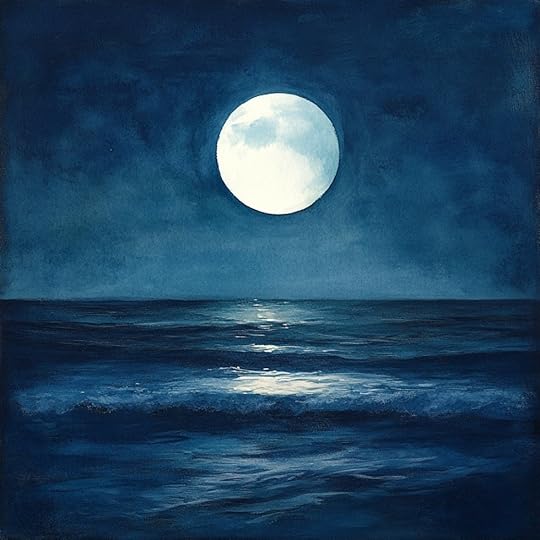
I had a long conversation with a close friend recently. She was calling from Europe, and I’m in Australia. Despite the oceans apart, we both had been experiencing heightened emotions this past week. There was something comforting about being halfway across the world from someone, yet feeling the same, at the same time.
She reminded me, ‘It’s the full moon. It has a way of pulling everything up to the surface.’
I’ve heard that before—the idea that the moon’s gravitational pull affects the water within us, much like it does the ocean tides. There are days where emotions well up without clear reason, as if a storm is building inside. I used to resist those feelings, thinking I needed to be composed all the time. But with age, I’ve learned that emotions come in waves. They ebb and flow, whether I like it or not.
Staying by the ocean these days has taught me a lot about the power of waves. On days when the sea is flat, the air feels stale, and there’s nothing to do but sit on the shore and wait. No surfing, no playing. There’s beauty in the quiet, but eventually, the stillness grows tiresome. Then the waves return—sometimes gentle, sometimes wild—and it feels like life resumes. Those ups and downs are what make the ocean alive, and in a way, they keep us alive too.
I’ve seen this play out in other places in my life as well.
Take the stock market, for example. I got into active investing a few years back, thinking I could ride a smooth upward trend if I played my cards right. I was wrong. Stocks don’t just go up—they drop, they climb again, they correct, they surprise. Movement is necessary. A market that only rises is bound to break, and it’s in the fluctuations that opportunity emerges. If everything went up, there would be no sellers, leaving no opportunity to buy. The ups and downs are necessary, despite sometimes feeling stressful.
Relationships, too, follow a similar rhythm. I’ve experienced connections where everything seemed easy at first—until conflict arose, and I panicked, thinking it meant something was wrong. Over time, I’ve realized that those moments of tension are natural, even necessary. It’s through misunderstandings and miscommunications that deeper conversations happen. Some of the closest connections I have today grew stronger only after going through some tough times. As the connection develops into something richer and more honest, I feel gratitude for the ups and downs that I had previously experienced.
Meditating for over a decade now, I used to crave stability, determined to create a life free from the ups and downs. I remember one meditation session early on, sitting cross-legged, hoping for peace but instead finding a mess. My mind wouldn’t stop racing, and I kept thinking, ‘Shouldn’t I be better at this by now?’ But then, somewhere amidst the chaos, it hit me—this is the practice. Just sitting with it all, without needing to fix or force it. That realization felt like taking a deep breath after holding it in for too long.
I realized that my mind, a reflection often of my world, does go up and down, here and there, and will feel more often than not all over. And the goal is not to quiet my mind or stop my thoughts. Rather it’s to witness my reality as it is, and lovingly accept the ups and downs with a smile.
A steady, unchanging life would feel stagnant. It’s the ups that make us grateful, and the downs that teach us resilience. Just like an ECG monitor that measures a heartbeat, life has to have ups and downs. When the line goes flat, it’s over. But as long as it’s moving, there’s life.
The full moon may pull emotions out of me that I can’t always explain, but I’m learning to stop trying to control the waves. Instead, I’m hoping to ride them. Some days I catch a perfect wave, other days I wipe out spectacularly—but that’s part of my journey.
The other night, I stood by the ocean under the full moon. The waves lapped gently at the shore, and the moon’s reflection shimmered across the surface like a silver thread. In that moment, I felt it—the rhythm, the ebb and flow, the quiet truth that everything passes. Some waves you ride, others take you down, but they all belong. They’re all part of the same ocean.
And that is how I learned to full moon.
October 13, 2024
How to Renovate
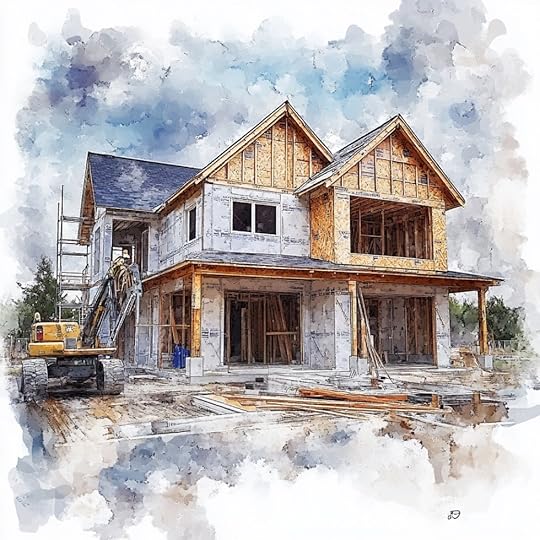
My mom called me yesterday, complaining about a home renovation project they are knee-deep in. Her frustration was clear—nothing was turning out quite the way she imagined.
A few days earlier, a new friend I met here in Sydney was venting about the same thing—delays, surprises, and the creeping sense of dread that their home wouldn’t be finished any time soon.
And last week, I listened to a voice note from a friend in Lisbon who was describing their own home renovation nightmare.
No matter where I turn, whether it’s in Sydney, Lisbon, or back home in Toronto, everyone has the same story. No matter the country, currency, or culture, home renovations seem to be a universal source of frustration, stress and anxiety. I’ve never heard someone say their renovation went perfectly—on time, under budget, stress-free, with everything turning out exactly as expected.
It got me thinking, why the consistent surprise about being surprised? It is predictable how unpredictable renovations will be, but yet everyone acts like it is the biggest surprise ever.
I think it comes down to control.
It’s not just about the budget overruns—many parts of our lives go over budget, and we don’t react as strongly. We might overspend on vacations, go a bit too far with holiday shopping, or indulge in an unexpected splurge on a night out. Yet these instances don’t hit us with the same emotional weight.
It’s also not purely about the delays. We face delays all the time—whether it’s a flight running late, a traffic jam, or waiting longer than expected for a delivery. We shrug those off more easily. So why is it that when it comes to renovations, our emotions spike?
A home is personal. It’s a place of safety, a reflection of who we are, and where we retreat to recharge. And when something disrupts that space—something as visible as a paint color not being quite right or a bathroom tile slightly off-center—it feels like we’ve lost control over something deeply intimate.
Objectively, the shade of white on the wall being a touch lighter or darker, or a wire being exposed where it shouldn’t be, doesn’t actually matter. In the grand scheme of life—where we’re seeking connection, doing meaningful work, loving those around us, and finding inspiration in the world—these small details of how our homes look or how long they take to complete are so clearly unimportant.
Yet, we make them matter. A lot.
We get emotionally attached to them because they represent something more significant: the feeling that we’re losing control over something that feels sacred to us.
There’s an easy, surface-level response to this problem: “plan better.” Allocate more time and money, expect the unexpected, and manage expectations accordingly. But that advice misses the mark because the issue isn’t about planning; it’s about emotions. “Plan better” doesn’t address the deeper emotional need we have for control, especially over something as personal as our homes. It’s a primal instinct to seek safety and security in the spaces we inhabit.
But here’s the thing: control is an illusion. It’s something we convince ourselves we have, and we hold onto it because it makes us feel safe. We like to believe that if we plan well enough, work hard enough, and organize everything perfectly, we can control the outcome. But life doesn’t work that way, and renovations are just one example of this truth playing out.
The solution isn’t to tighten our grip. Instead, it is to look for security somewhere else. Within ourselves.
When I take a step back, pause, and breathe, I realize that my real sense of safety in life doesn’t come from controlling my environment or my circumstances. It comes from trusting myself. It comes from knowing that no matter what happens—whether it’s a delayed renovation, a relationship challenge, or a career setback—I’ll be okay. I often need to remind myself of this when I get caught up in a moment or a situation.
This sense of inner stability is something no external situation can mess with. When we look for safety outside of ourselves, in the perfect shade of white paint or the exact alignment of bathroom tiles, we set ourselves up for disappointment. But when we cultivate safety within—through self-trust, self-compassion, and resilience—we can weather any storm, whether it’s a home renovation gone wrong or something far more significant.
The antidote to the feeling of a loss of control is finding peace within ourselves, knowing that no matter how chaotic things get on the outside, I’ll be just fine on the inside.
This perhaps is the real renovation worth undertaking.
And that is how I learned how to renovate.
October 6, 2024
How to Shower

‘I’ll shower on it and get back to you.’
These words have been etched to memory for me, for well over a decade now, as they were mentioned to me during a business lunch long ago. I think the words have stuck with me as they were a surprise to hear, yet at the same time, so truthful and relatable.
Many insights and breakthroughs have come to me while in the shower. Regardless of the domain of life, be it business, health, or relationships, I am often pleasantly surprised to find answers to problems after ‘showering’ on them. Oftentimes, answers to problems I wasn’t even aware of that I had.
In a way, showering feels like a form of mindfulness, where my attention is not being pulled away from any external stimuli or distractions from screens, or even people. It is me alone, with my thoughts.
The physical repetitive routine of showering is quite mindless in fact, requiring very little mental effort. This is why my mind can focus on more interesting or important topics, without the pressure of trying to be productive.
I continue to feel a sense of awe and wonder of how the answers I am often looking for outside of me, be it from friends, therapists, books, or teachers, are more often than not already sitting within me. All I need to do is to listen for them.
And that’s often the most difficult part. Learning to listen to myself. Which requires overcoming three obstacles.
The first obstacle to listening to myself is getting distracted by the noise outside of me.
With the availability of endless content, be it from professional social media personalities, self proclaimed self help gurus, life coaches, researchers turned YouTubers, and more sources, it can feel easy to forget that we know ourselves best and know what we need.
Thinking that the perfect answer is out there, and all that I have to do is find it, is like searching for a needle in a haystack. It’s pointless and can be painful.
The second obstacle to listening to myself are the many voices in my head.
They are often the voices of my parents, my partner, my sibling, my friends, or my colleagues. Trying to solve my problems through the sole lens of what those around me will think, believe, support, or accept, is a common problem I know many struggle with, as I know I have at times as well.
It takes a belief in oneself to back oneself. To accept that not everyone around me may agree with my choices. And that’s okay. It’s difficult at first but becomes easier over time.
The third obstacle to listening to myself is a fear of failure.
What if I’m wrong? Then who will I have to blame? At least if I followed some generalized best practice from a researcher, or listened to a family member, if it doesn’t work, I can point my finger out the window. And although I may still have a problem, I at least don’t have a bigger problem of feeling like I was wrong.
The reality is that if I listen to myself, I will be wrong at times. The same goes if I listen to some person with credentials or some person I have a relationship with. No one, not anyone, can know or control my life. Not even me.
Learning not only to make mistakes, but to own the mistakes I make, is the prep work I have to do to be truly open to listening to myself.
Only then, after I’ve tuned out the external noises, the internal voices and the fear of failure, can I truly start to ‘shower’ on my problems and connect with my deeper wisdom.
And that is how I learned to shower.
September 29, 2024
How to Left Side
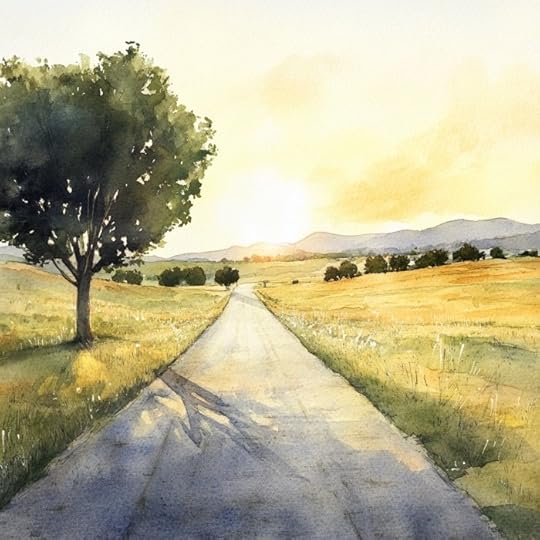
I went to turn on the car, and then realized I was sitting in the passenger seat.
It took me a second to remember that down under, they drive on the other side of the road, and their cars sides are flipped.
Having recently arrived in Sydney, I rented a car as I wanted to more easily explore this beautiful city where I plan to winter this year.
Taking my first left turn out of the garage, I noticed myself perched forward on the car seat, extra vigilant of both the left and right sides of the road.
‘Left side, left side, left side’ I kept chanting to myself quietly, driving for once far below the posted speed limit, carefully staying within the lines and turning even more carefully.
My heart beating a bit faster, my palms a bit sweaty and my eyes open a bit wider, I was nervous and a bit more anxious than I had expected or prepared for.
On my second day, I considered taking an Uber instead to save myself the discomfort, even though it was only a 10 minute drive away. As I was about to request the ride in the app, I caught a glimpse of the rental car keys lying on the table and decided I needed to get comfortable driving on the left, and the only way was to face the fear.
It wasn’t so bad the second time around.
And on the drive back to where I was staying, I found myself actually enjoying it. I turned the music on and found myself smiling for the first time behind the wheel.
Within days, what I had feared had become a chance for growth and a source of needed confidence on the road.
As I reflected one morning in my journal, I began to appreciate just how adaptable we are. Oftentimes, like I had experienced, our minds get in the way. I know my mind is trying to protect me and keep me safe, yet at the same time, my instinct to challenge myself, do what makes me uncomfortable and experience something new is the reason for most of the best adventures in life.
Feeling fear can be a signal that it’s time to lean in, versus lean away.
In business, relationships, health and more, I have often felt fear and when looking back, I have never regretted not facing that fear. It isn’t easy, but totally worth it.
What makes it a bit easier is to believe in myself. Without the self-belief that I can do something I feel fear about, I don’t stand a chance. With the self-belief, I am now tapping into an inner resource and spring of energy that propels me forward. Forward into my future.
And that is how I learned to Left Side.
September 22, 2024
How to Inside Out
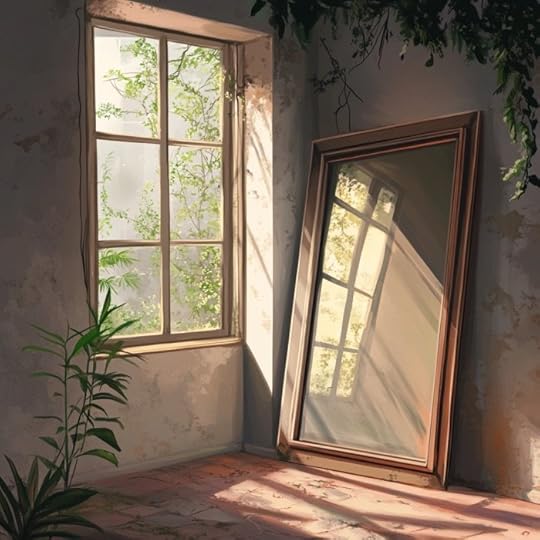
Often children stories we think are helpful for children, but watching Inside Out recently was a reminder of how much more relevant the children stories can be for adults, as we have more life experiences to relate and apply to.
In the Inside Out movie, which one day I imagine my future kids will refer to as a classic, different characters inside a young girl’s mind each represent a different emotion.
Meet Joy. Cheerful and always positive, she is clearly the emotion “in charge” in this young girl’s mind, setting the tone and everyone else followed.
Meet Sadness. A bright blue blob that initially comes across as a downer, always expressing some negativity.
Meet Disgust. A bright green cool looking character with slick hair, who often resists what is new or different.
Meet Fear. A scrawny skinny character with big glasses, always hiding and forever scared. Of everything and everyone.
And finally, meet Anger. A short but plump bright red character always ready to yell and scream at the slightest discomfort .
Initially, I resonated with Joy, as she was the one keeping the rest of the emotions in check and maintaining a positive mood. And I found myself getting frustrated with the other characters.
However, seeing the respective emotions work together as a team and the interplay between them began to sit in as more real and less imaginary.
Each emotion serves their own purpose. And I could relate to each emotion.
Sadness for example, initially annoying however overtime I could see how this emotion was the root of empathy and feeling for others, and that in turn created the opportunity for connection.
Or take anger. While at the surface feels counterproductive and mindfulness teachings encourage us to not feel this emotion in particular as intensely, sometimes this emotion is what becomes the catalyst for change. And rapid change.
Many of these emotions, other than joy, often feel unpleasant and are easy to avoid. However, avoiding them is a fool’s game as the emotions only grow when left unattended, and by the time we have no choice but to face them or express them, we have no clue what the initial trigger was to begin with.
Children experience and express a range of emotions frequently. Adults also experience the same range of emotions but do not express them very frequently.
Children don’t know better than to allow them to show, but as we grow older, we get conditioned to hide them.
Emotions are core to who we are, and shape our experience of life. It’s been a journey for me to become more comfortable with my emotions, and through therapy, journaling, reflection and meditation, I feel I have some of the tools to continue to work with and through them.
At times my mind becomes an emotion-making machine, an endless stream of thoughts and feelings that floods my day. Those are the signs that I need to take a moment to pause, and check-in to see what’s going on, inside.
It is so easy to look and point outside as the reason, or cause, of what I am feeling inside. However if the same shared external cause, be it the weather, politics, the stock market, a sports team, triggers different emotions in different people, then it is clear that the feeling has more to do with what’s going on the inside versus the outside.
And that is how I learned to Inside Out.
September 15, 2024
How to LEGO
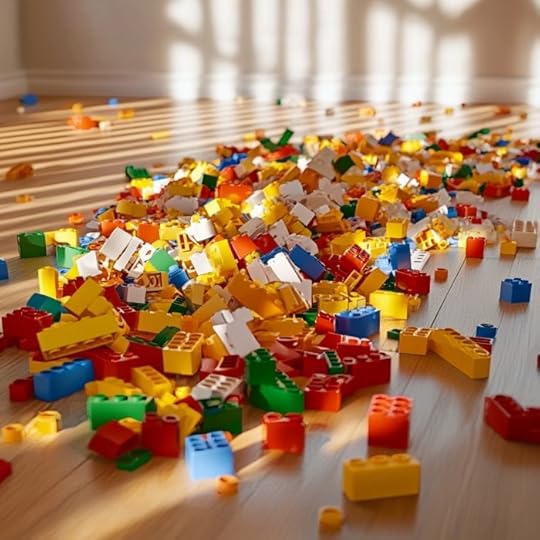
The bright green base was no bigger than the size of my hand.
The pieces were sprawled out on the floor, and we each took turns, quietly laying them brick by brick on top of one another.
My mind started to wander, no longer present with the mindless activity of laying LEGO bricks in a straight, uniform, multi-colored vertical tower.
Until I saw him lay a piece that was half on the base, and half off the base. He layed another one on top of this piece that now overhung the rest of the otherwise perfectly straight vertical tower.
I stopped laying pieces and continued to pass him pieces, encouraging him to see where he would place them next. In not too much time, the vertical tower was now growing horizontally, in all directions. It started to take the shape of a giant ship that was narrow at the bottom, where it meets the water, and wider at the top, where it meets the sky.
As I watched him quietly break the artificial boundaries of laying pieces in straight and organized shapes, it was a mirror for me on how much I had fallen into the artificial boundaries of day-to-day life. This LEGO activity quickly became a silent nudge and guiding hand for me to think beyond the artificial boundaries that my mind has become comfortable, and at times numb, playing within.
There is no one way to LEGO. It’s a collection of brightly colored plastic bricks, with endless combinations of constructions possible.
Similarly, there is no one way to life. It’s a collection of uniquely beautiful experiences, moments, connections and learnings made possible through curiosity and desire.
The new LEGO kits these days come with instruction manuals, and despite them turning into objectively more interesting and intricate sculptures and scenes, the process leaves no space for creativity or judgment. There is only one way to assemble it, and it involves blindly following the instructions to a tee with absolutely no margin for error.
Life just isn’t like this though. We may think and at times search for the instruction manual, hoping that if we just follow someone else’s steps, that we’ll get to where we’re hoping to get to, but in reality, there is only one path for each of us, and it is unique to us.
The LEGO structure my three and a half year old nephew and I built together is one-of-a-kind, and can never be replicated. Nor does it need to. The next time we sit down together to build LEGO, we get to dream up something completely different.
This is what makes life so interesting. The endless possibilities and limitless potential in every moment to create, discover and learn. And thanks to my nephew, I was reminded to think beyond the artificial boundaries of my mind.
And that is how I learned to LEGO.
